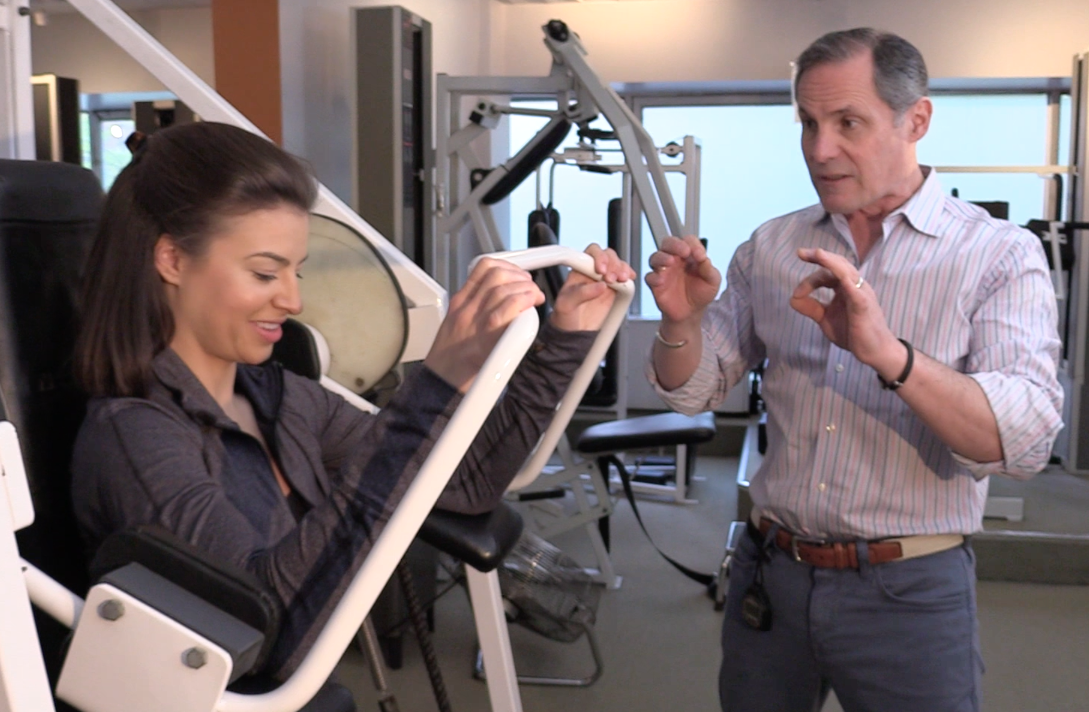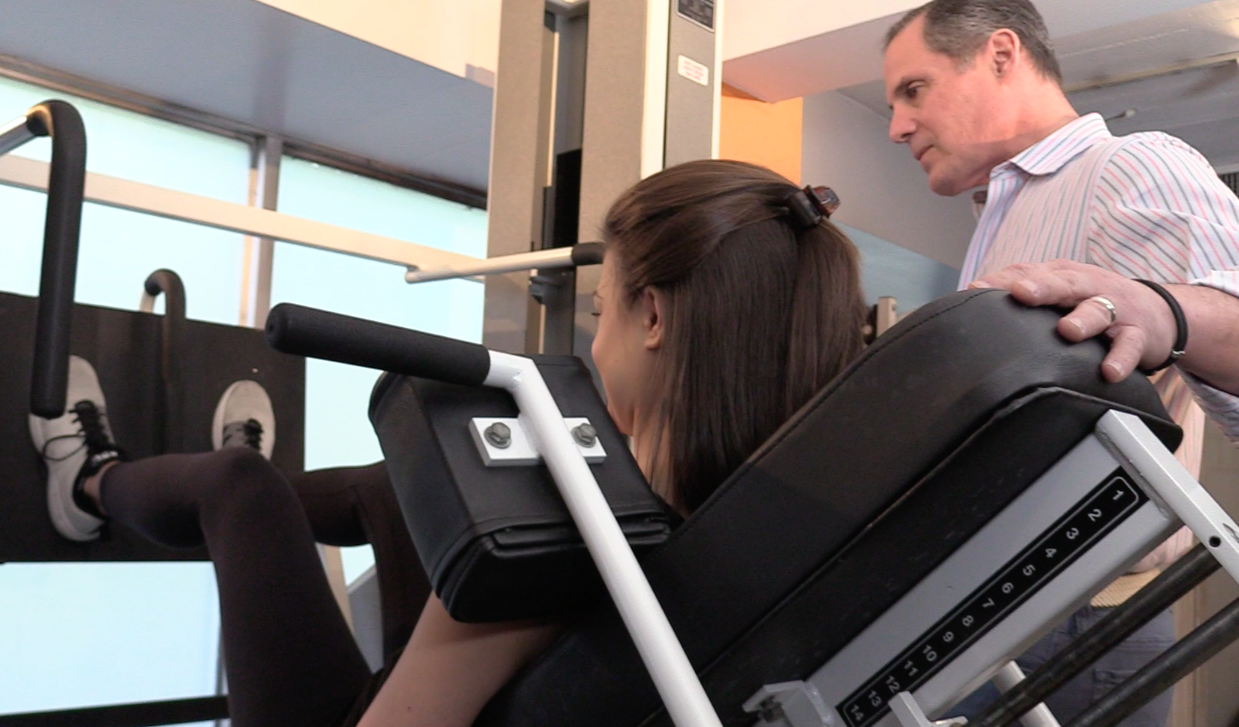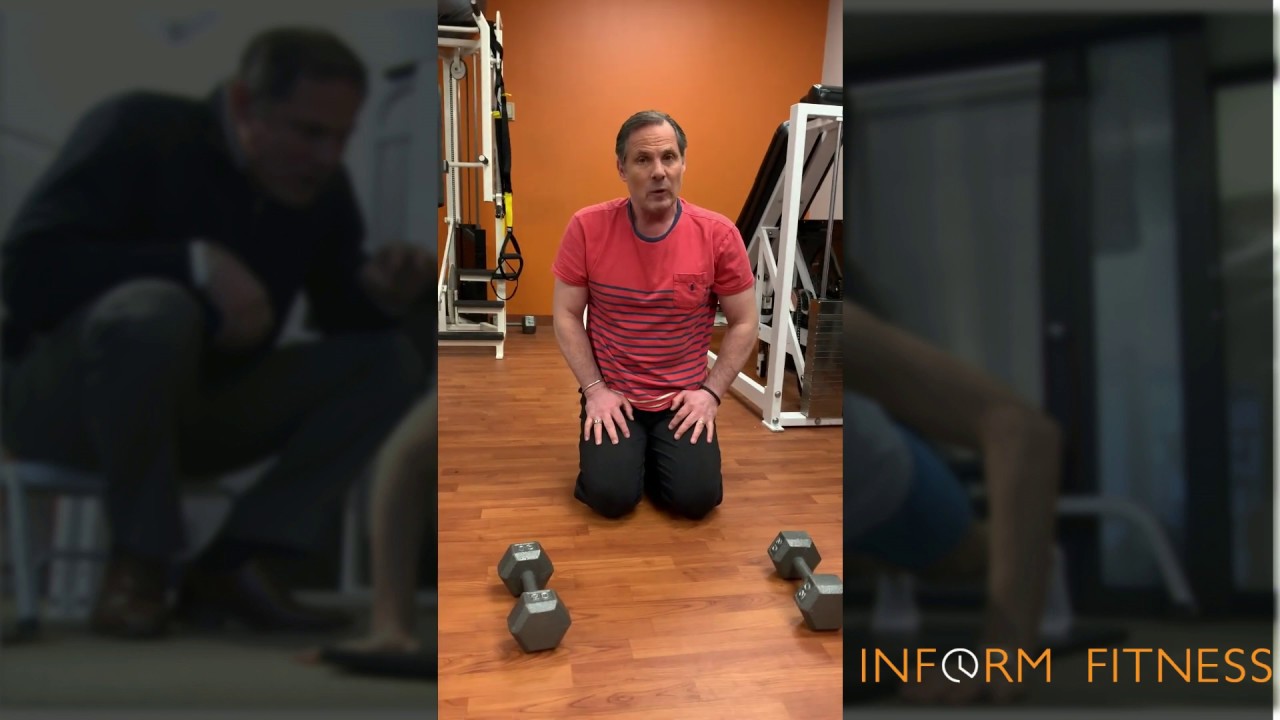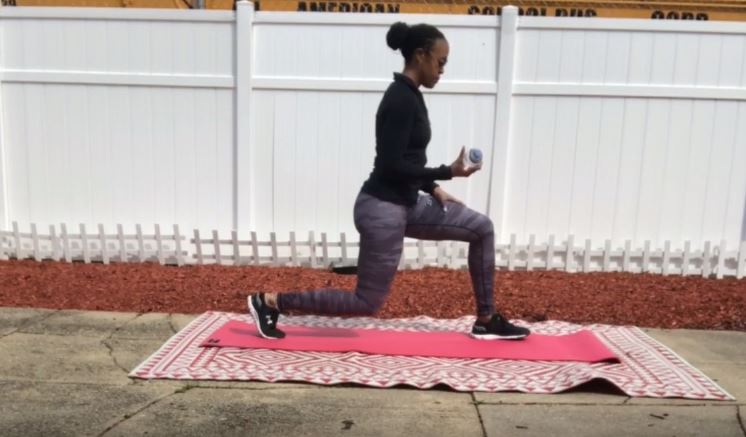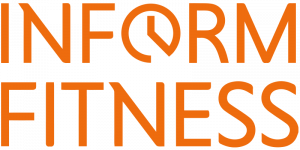If you’re here, you may understand what personal training is, and are leaning towards it as your fitness methodology of choice to get back in shape, lose weight, gain strength or reach other fitness goals. As well, you may already understand how you go about evaluating personal trainers and personal training facilities.
In this post we’re going to take a slight departure and talk about why I chose the particular personal training method we use at InForm fitness.
As we discussed, or you may be finding out, personal training approaches are almost as unique as the trainers themselves, but our approach at InForm Fitness is far less about being different, and far more about being effective.
The Noblest of Endeavors. As I’ve stated before, personal trainers serve a highly noble purpose – helping individuals maximize the utility of the most important asset they will ever own – their health and vitality.
Much like the medical field, our aim is to promote health, prevent disease and injury and make our ‘patients’ as healthy as they can be for as long as they are able and willing.
I can’t think of a more important cause to take on than this, or a more worthwhile endeavor an individual can choose. And frankly, that is why I do it.
But from this common root, many approaches to helping clients maintain their health and vitality spring forth.
And here’s where it’s important to understand InForm Fitness’ approach.
InForm Fitness Methodology – Underpinnings
To maximize the utility of an individual’s health and vitality, the InForm Fitness methodology was designed to achieve certain aims.
Unless you’re in the medical field or have an avid interest, the average person does not understand much about the major systems of the human body and how they work – much like automobiles or other complex machines. However, like automobiles, most people don’t need to know anything beyond the basics to keep it running or know what to do when it doesn’t. Fortunately, your personal trainer should understand these systems. We certainly do at InForm Fitness.
It’s in this understanding, our fitness methodology was put together based on these core underpinnings:
-
- The Importance of Muscle: The musculoskeletal system is the foundational system of the body and therefore, at the foundation of human health.
- Maintaining the Musculoskeletal system: All other bodily systems are there to support the musculoskeletal system.
- What is needed to build muscle?: Developing muscle mass, and subsequently strength, requires a specific process by which the musculoskeletal system is strengthened and nurtured.
- What is the best way to build muscle? There is a specific way the body creates muscle mass requiring the right environment and equipment.
- While gaining muscle mass, injury and/or unnecessary wear and tear must be avoided
Let’s take a look at each of these.
The Importance of Muscle: The musculoskeletal system.
Without turning this into a doctoral thesis, we’re going to take a ‘top of the waves’ look at bodily systems.
The musculoskeletal system – our bones, ligaments, tendons, joints, muscles, cartilage etc. – is the foundational system of the body.
If you think about it, the musculoskeletal system is the thing that gives us shape and structure, allows us to move and react, and protects other bodily systems – think of the relationship between the skull and spinal column and our neurological systems, and the relationship between bone and marrow to our immunological system to name just a few.
All other bodily systems – respiratory, circulatory, neurological, gastrointestinal and immunological – are all there to support and maintain the musculoskeletal system. In reality, there is a close symbiotic relationship between all these systems.
Through this symbiosis, the more vital the musculoskeletal system, the more vital the other systems and the entire body.
2. Maintaining the musculoskeletal system.
If the musculoskeletal system is a foundational bodily system, muscle mass, and subsequently strength, are barometers of a healthy musculoskeletal system.
If we don’t do anything about it, we naturally lose both muscle mass and strength over time as we age.
Therefore, if we are to maintain optimal health, maintaining and enhancing the musculoskeletal system through increasing both muscle mass and strength as we age are essential to long term whole body health, independence and activity.
And this is the core objective for the InForm Fitness Personal Training methodology – help clients increase muscle mass and strength.
But…. there’s a way to go about it and a way not to go about it.
3. What is needed to build muscle? There is a specific way the body creates muscle mass.
The musculoskeletal system has a highly tuned stimulus/response mechanism built in.
If you stimulate the system in the right way, it will respond in kind – with mass and strength.
To stimulate this system to get the mass and strength outcomes we’re looking for, people need to move heavy weights or objects to ‘stress’ the muscles and bones. In other words, make them work.
If we stress the muscles in the right way, in the right amount, just frequently enough, we will yield the health outcomes we’re looking for.
4. What is the best way to build muscle?
We introduced the idea of moving heavy weights and/or objects to invoke the body’s reaction to ‘stress’. I want to take a moment and clarify ‘heavy’ weights. Heavy is a relative term. We are talking about a). Weights and objects ‘heavy enough’ to stress YOUR specific muscle or set of muscles and b). ‘heavy’ is relative from person to person. What’s heavy to you, and what’s heavy to a professional linebacker may be completely different things.
How much is enough?
So we learned the Inform Fitness Methodology is about stressing the musculoskeletal system in the right amounts to get the response we’re looking for.
But that’s only half of the equation.
The ‘amount’ is just as critical.
With all this talk about weights and stress you may be thinking this sounds hard, even risky.
The Environment
Getting to the point where your stressing muscles to the point of reaction, requires your complete focus. A cool, distraction-free environment is critical to have your full attention on the important work at hand.
Fitness Equipment
As well, you will need some equipment. In most instances, your own body will be the equipment! But other than that most other pieces of equipment are basic and easily available. At InForm, we’ve specially modified our equipment for the precise movement and stress points.
5. While Gaining Muscle Mass, Injury and unnecessary wear and tear must be avoided.
If you’re new to exercise and ‘weight training’, it’s important to understand any type of fitness regimen where you are doing new movements, new activities, exerting yourself in new ways and especially lifting weights does require some understanding of how to do these things properly.
Even something as simple as running can lead to unwanted injury if not done properly.
Weight training is no different. Even if you don’t use a personal trainer, getting an understanding of basic exercise, lifting movements and proper technique will suit you very well.
I also want to take a moment to say do not start any fitness routine, including this one, without consulting with your health care professionals and following their advice.
Weight training does require new movements. However, we want to stress the muscles just enough to get the response we’re looking for. Any more is simply unnecessary. It adds unnecessary wear and tear on the body, especially joints and ligaments and increases a likelihood of injury. Both things that are inconsistent with the health outcomes we’re looking for.
So gaining muscle mass WITHOUT injury and/or unnecessary wear and tear on the body is the optimal exercise state.
The InForm Fitness Methodology
The InForm Fitness Methodology was set to achieve primary health outcomes and avoid health detriments.
It is essentially just enough weight training, very slowly and deliberately, with very strict, proper form, in just the right amounts to stress the muscles to the point of activating the body’s response.
Slow and deliberate movement, in the proper form, provides maximum muscle stress, while minimizing joint stress.
Maximum work with minimum movement!
And no more.
Your body doesn’t actually need any more. Although brief in time, usually no more than 20-30 minute sessions, it is high in intensity.
Clients, even those experienced in fitness, say it’s the most challenging workout they’ve ever done.
I know this sounds inconsistent with the prevailing fitness wisdom of more is better – go to a gym three to four times a week and do a variety of exercises for at least an hour at a time.
Again, at InForm, we’re interested in effectiveness and fitness outcomes rooted in physiological fact.
The secret to InForm Fitness’ Effectiveness? (Actually there’s two secrets…)
The first secret is ‘failure’. Failure is where clients succeed. At first, this may seem like a paradox.
What I mean by failure, is if we’re doing maximum work there will come a point where you cannot move the weight or object any further no matter how hard you try.
This is known as ‘muscle failure’ and is the point where the musculoskeletal system is stimulated to respond.
Minimal movement yet maximum work.
The second secret to the effectiveness of the InForm Fitness Methodology is rest. While resting, the body is reacting to stimulus created by muscle failure and sets about to send nutrients, proteins and other repair mechanisms to taxed muscles to make them bigger and stronger and ready for the next time there’s ‘stress’.
The right amount of stimulus is important, but so is the right amount of rest so the body is fully repaired and refreshed for the next round of stimulus.
Maintaining an active lifestyle.
Giving your musculoskeletal system the right amount of stimulus and rest is only part of the equation.
While, you don’t actually have to spend hours at a gym to get the stimulus/response you’re looking for, you can if that’s what you like to do.
The point is, make sure you are maintaining an active lifestyle, doing the things you like to do. Walk, run, bike, swim, golf, garden, even go to the gym…whatever it is, use your health and vitality to live life to the fullest!
As you look to evaluate personal training resources and/or fitness regimens, make sure it is in line with what you are trying to accomplish.
To your health,
AZ


